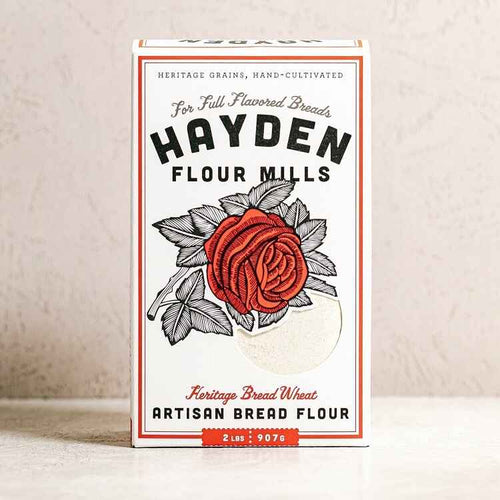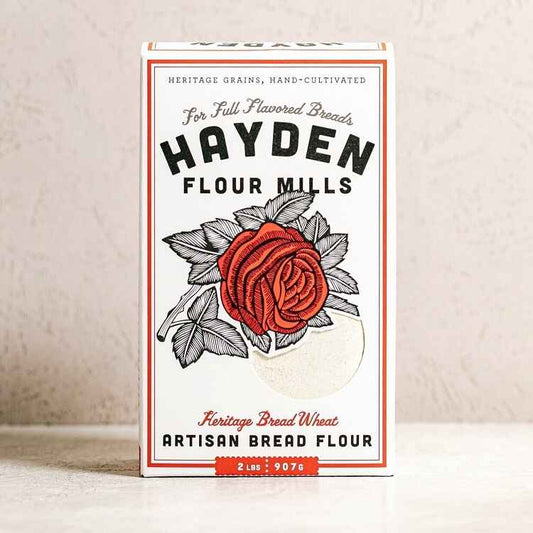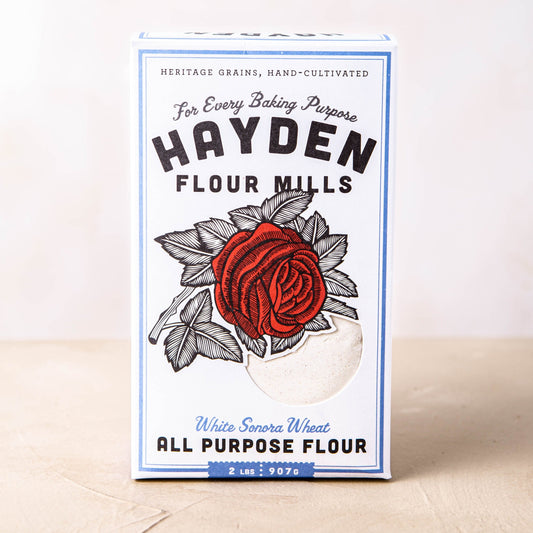What You'll Need
Leaven
15 g 100% hydration refreshed and active sourdough starter
30 g water
30 g Emmer Farro Flour
Dough
115 g whole milk, 90°F
45 g water, 90°F
30 g mild honey
35 g egg yolks, room temperature
7 g fine sea salt
3 g osmotolerant yeast (i.e. SAF Gold yeast)
240 g Artisan Bread Flour
60 g Emmer Farro Flour
100 g unsalted butter, very soft room temperature
Egg Wash
1 egg yolk + a dash or two of whole milk or cream
2 tablespoons sesame seeds, optional
Directions
You have two options for scheduling this bread:
-
Overnight Method: Start the leaven the morning before you plan to serve the buns and mix the dough in the evening. Let the dough rest overnight in the refrigerator. The next morning, the dough will be easier to handle for shaping. After shaping, proof the dough for a few hours, and your buns will be ready to bake.
-
Same-Day Method: Mix the leaven the night before, then mix the dough early the next morning. Let it rest in the refrigerator for a few hours to firm up, shape the dough, proof, and bake by the afternoon. This method will result in a milder sourdough flavor, but the buns will still be irresistible.
There will be a milder sourdough flavor with the Same-Day Method, but they will still be irresistible. Go easy on yourself and choose the schedule that works best for you!
1. Make the Leaven
About 8 to 12 hours before making the dough, combine the starter, water, and flour in a small bowl. Stir to combine, cover with a lid, and let ferment at room temperature.
2. Mix the Dough
In a stand mixer fitted with a dough hook, add the milk, water, honey, leaven, egg yolks, and salt. Sprinkle the yeast over the mixture and whisk to combine. Let sit for about 5 minutes.
Add the flours and mix on low speed, scraping down the sides as necessary, until the flour is hydrated. Increase the mixer speed to medium-high and continue mixing to develop the gluten, about 5 to 7 minutes. Perform a windowpane test by stretching a small piece of dough: if it becomes see-through without tearing, the dough is ready. If it tears, continue mixing for 2 to 3 more minutes and test again. The dough will be very sticky; do not add more flour.
Add the softened butter in two additions, mixing on medium-low speed until incorporated, scraping down the sides as needed. Increase the speed to medium-high and mix for another 4 to 5 minutes. The dough should feel smooth, slack, and sticky and register about 84°F on an instant-read thermometer.
Remove the dough hook and cover the bowl. Clean out the mixing bowl and lightly coat it with oil. Place the dough back in the bowl, toss to coat, cover, and let ferment at room temperature for about 2 hours until it feels slightly puffy. Move the covered bowl to the refrigerator for at least 2 hours to firm up the dough or retard it overnight.
3. Shape and Proof the Dough
Line a 10 to 12-inch round baking pan with parchment paper and grease the bottom and sides with butter. Transfer the dough to a lightly floured work surface and divide it into 12 equal pieces (about 55 g to 60 g each). Pre-shape each piece into small balls by tucking the edges under and letting them rest for about 5 minutes.
Shape the dough balls by cupping them in your palm and rolling them clockwise against the work surface to create surface tension. Space the balls evenly in the prepared pan, leaving about 1 inch between them. Cover the pan with a large plastic bag or place it uncovered in a proofing box set to 80% humidity.
4. Final Proof the Buns
Allow the buns to proof at 80°F for about 2 to 3 hours, depending on how long they were retarded in the fridge (if opting for the Overnight Method). They will be ready when they have doubled in size, are touching, and appear puffy in the pan. When in doubt, give them a little more time.
5. Preheat the Oven
Preheat your oven to 350°F and position a rack in the middle.
6. Bake the Buns
Whisk the egg yolk and milk together in a small bowl. Using a pastry brush, lightly coat the tops and sides of the buns with the egg wash. Bake the buns for about 30 to 35 minutes, rotating halfway through. The buns are done when the crust is golden brown. Remove from the oven and transfer the pan to a wire cooling rack.
7. Serve
Serve the buns warm or at room temperature. They are best enjoyed the same day but can be stored in a covered container at room temperature for up to 3 days. Reheat gently if needed.
Makes 1 dozen.
Recipe contributed by Sarah Owens.









